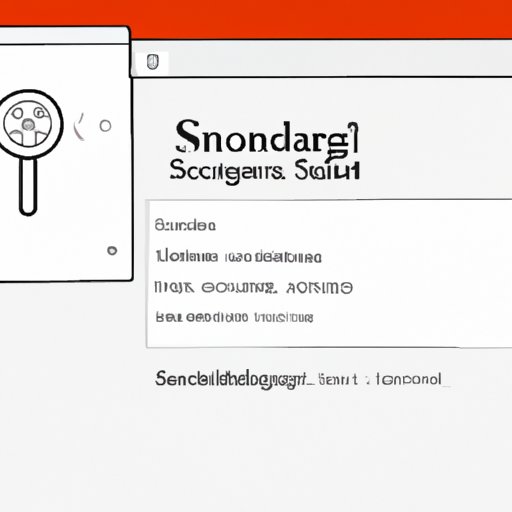Introduction
As a Windows user, you might sometimes want to take a screenshot of your computer screen for various reasons such as troubleshooting, sharing information, and more. A screenshot is an image that captures what is displayed on your screen at a particular time. In this article, we’ll explore different ways to take screenshots in Windows so you can easily share information with others or keep a record of something important.
Different Ways to Take Screenshots in Windows
Windows offers different options to take a screenshot such as using the snipping tool, keyboard shortcuts, third-party software, or the Print Screen key.
Using the Snipping Tool
The snipping tool is a built-in Windows program that allows you to select a portion of your screen and capture it as an image. It’s very useful when you want to take a screenshot of a particular part of the screen or an error message.
Using Keyboard Shortcuts
Windows also provides various keyboard shortcuts that can be used to take screenshots quickly, without having to open any software. This is especially useful when you want to take screenshots of the full screen or an active window.
Using Third-Party Screenshot Tools
Another way to take screenshots is by using third-party software. There are many options available on the internet that provide more features than the built-in Windows tools. However, some of these programs may require payment or have limited free versions.
Using Print Screen Key
Finally, you can take a screenshot by pressing the “Print Screen” button on your keyboard. This will capture the entire screen image, and you can then paste it into an image editor to save or edit.
How to Take Screenshots Using the Snipping Tool
The snipping tool is a popular and easy-to-use program that can be used to take screenshots. Follow these steps to use the snipping tool:
- Open the snipping tool by pressing the “Windows” key and typing “snipping tool.”
- Select the type of snip you want (i.e., free-form, rectangular, window, or full-screen).
- Use your mouse to select the portion of the screen that you want to capture.
- Save the screenshot by clicking on “File” and then “Save As.”
How to Take Screenshots Using Keyboard Shortcuts
Keyboard shortcuts are a quick and easy way to take screenshots in Windows. Here are some common keyboard shortcuts that you can use:
How to use the Snipping Tool Shortcut
Press “Windows” key + “Shift” key + “S” key together. This will open the snipping tool in selection mode. Use your mouse to select the portion of the screen that you want to capture. The screenshot will be saved to your clipboard, and you can then paste it into an image editor or document.
How to use the Print Screen Shortcut
Press the “Print Screen” or “PrtScn” key on your keyboard. This will capture the entire screen image, which you can then paste into an image editor or document.
How to Use Third-Party Screenshot Tools
There are many third-party software options available for taking screenshots in Windows. Here are a few popular options:
Snagit
Snagit is a popular screenshot software that offers various features such as scrolling capture, video recording, and more. It’s widely used by professionals and comes with a 15-day free trial.
Greenshot
Greenshot is a free and open-source screenshot software that provides basic features such as capturing a region, window, or full-screen. It’s easy to use and comes with editing tools.
Lightshot
Lightshot is a free and lightweight screenshot tool that provides features such as image editing and sharing options. It allows you to select and capture any part of the screen with ease.
Conclusion
In conclusion, taking a screenshot in Windows is an essential skill for anyone who wants to capture and share information easily. By using the snipping tool, keyboard shortcuts, or third-party software, you can quickly take screenshots of the entire screen, selected areas, or error messages. We hope this guide has helped you understand how to take screenshots in Windows and which tools to use for the job.
